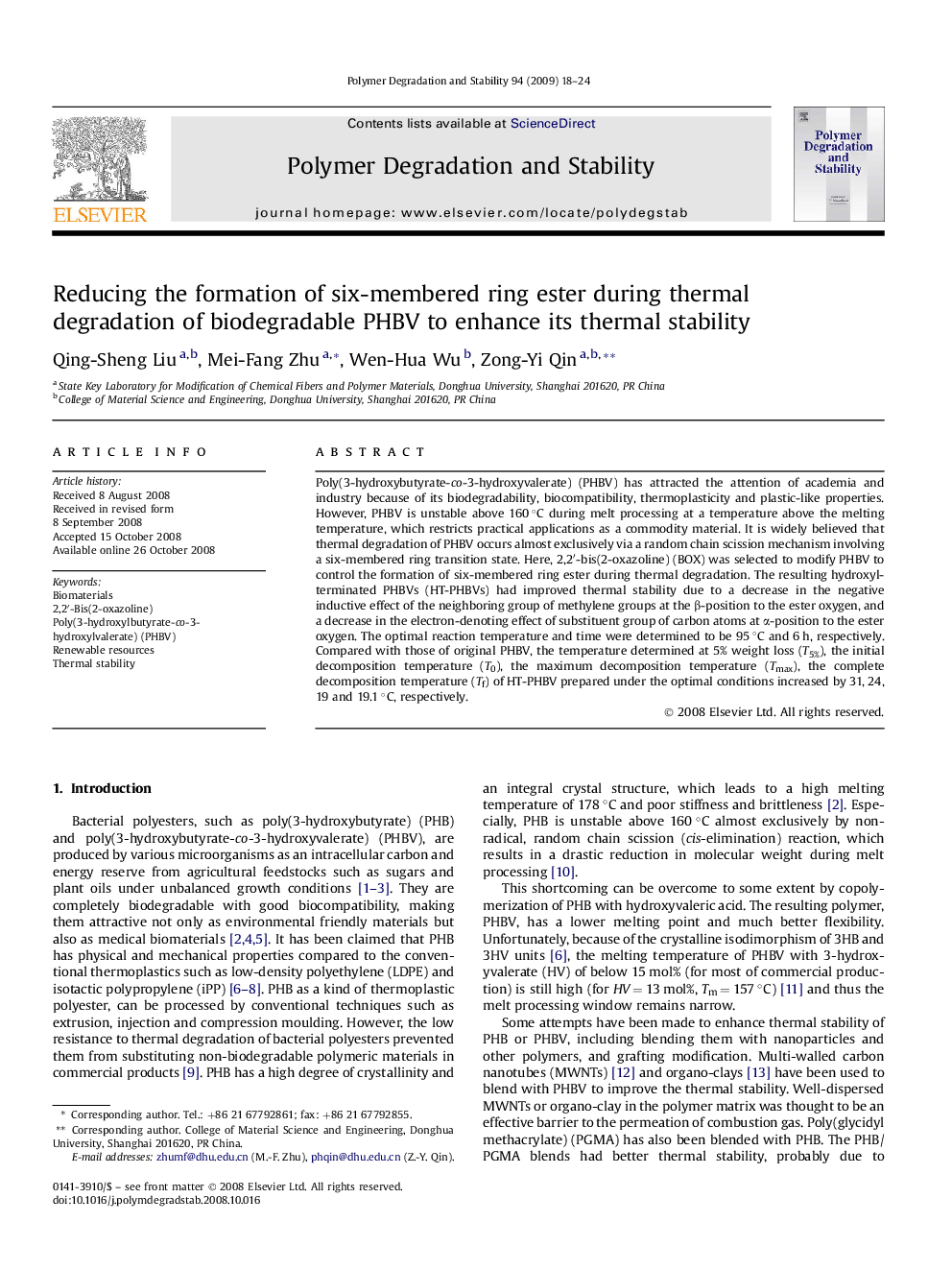| Article ID | Journal | Published Year | Pages | File Type |
|---|---|---|---|---|
| 5204087 | Polymer Degradation and Stability | 2009 | 7 Pages |
Poly(3-hydroxybutyrate-co-3-hydroxyvalerate) (PHBV) has attracted the attention of academia and industry because of its biodegradability, biocompatibility, thermoplasticity and plastic-like properties. However, PHBV is unstable above 160 °C during melt processing at a temperature above the melting temperature, which restricts practical applications as a commodity material. It is widely believed that thermal degradation of PHBV occurs almost exclusively via a random chain scission mechanism involving a six-membered ring transition state. Here, 2,2â²-bis(2-oxazoline) (BOX) was selected to modify PHBV to control the formation of six-membered ring ester during thermal degradation. The resulting hydroxyl-terminated PHBVs (HT-PHBVs) had improved thermal stability due to a decrease in the negative inductive effect of the neighboring group of methylene groups at the β-position to the ester oxygen, and a decrease in the electron-denoting effect of substituent group of carbon atoms at α-position to the ester oxygen. The optimal reaction temperature and time were determined to be 95 °C and 6 h, respectively. Compared with those of original PHBV, the temperature determined at 5% weight loss (T5%), the initial decomposition temperature (T0), the maximum decomposition temperature (Tmax), the complete decomposition temperature (Tf) of HT-PHBV prepared under the optimal conditions increased by 31, 24, 19 and 19.1 °C, respectively.
